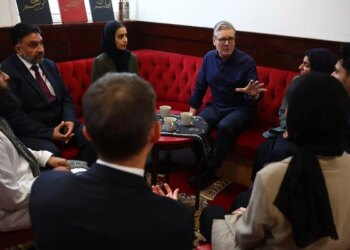Select Language:
Unveiling the Top 10 Countries Richest in Natural Resources in 2025

As the world continually evolves, understanding which nations hold the most natural resources is crucial for investors, policymakers, and environmentalists alike. In 2025, the landscape of resource wealth remains pivotal, influencing economies and geopolitical balances. Here’s a detailed list of the top 10 countries with the richest natural resource Endowments.
1. Venezuela — Vast Oil Reserves Keep It at the Top
Venezuela continues to dominate with the world’s largest proven oil reserves, estimated at over 300 billion barrels. Despite economic challenges, its oil wealth remains a critical asset, driving energy markets worldwide. The nation’s aggressive exploration and occasional geopolitical disputes have underscored its significance in global oil production and geopolitics.
2. Russia — Extensive Natural Resources Cover Multiple Sectors
Russia maintains its position as a resource-rich superpower, possessing immense reserves of natural gas, coal, oil, and minerals. The country’s vast Siberian expanse holds nearly 20% of the world’s natural gas, making it a leader in global energy exports. Its mineral wealth includes significant deposits of nickel, platinum, and diamonds, sustaining its industrial sectors.
3. Saudi Arabia — Leading Oil Exporter with Massive Reserves
Saudi Arabia’s oil reserves are second only to Venezuela, with approximately 266 billion barrels. Its OPEC status grants it substantial influence over global oil prices. The Kingdom’s investments in alternative energy are growing, but its reliance on oil exports keeps it high on this list.
4. Canada — Rich in Mineral and Energy Resources
Canada boasts enormous deposits of minerals like nickel, uranium, gold, and diamonds, particularly in the Canadian Shield. Its oil sands in Alberta add significant crude oil reserves, making it a key player in North American energy and mineral markets. Progressive environmental policies have pushed innovation within resource extraction.
5. United States — Diverse Resources Power Its Economy
The U.S. has a broad spectrum of resource wealth, from shale oil and natural gas to coal, uranium, and rare earth elements critical for modern technology. The shale revolution transformed domestic energy production, making it one of the top resource holders globally.
6. Iraq — Oil-Driven Economy with Untapped Potential
Iraq’s proven oil reserves are estimated at over 140 billion barrels. Political stability issues continue to impact development, but its resource potential is undeniable. Ongoing projects aim to boost capacity and attract foreign investment, vital for economic growth.
7. Democratic Republic of Congo — Mineral Powerhouse
Rich in cobalt, copper, and coltan, the DRC is critical to the global supply chain for electronics and electric vehicles. Despite political challenges, its mineral wealth positions it as a future resource hub, especially for minerals vital to green technology.
8. Brazil — Abundant in Natural Gas, Iron, and Gold
From Amazon rainforest reserves to significant iron ore deposits, Brazil’s natural resources span several sectors. The country’s increasing exports of rare earth elements and metals bolster its economic prospects and support its burgeoning industries.
9. Australia — Leaders in Mineral and Energy Resources
Australia’s resources include vast coal, iron ore, lithium, and nickel reserves. Its lithium-rich deposits are especially vital for the electric vehicle revolution. The country’s robust mining exports make it a key resource nexus in the Asia-Pacific region.
10. Iran — Substantial Oil and Gas Reserves
Iran’s proven reserves include nearly ∞200 billion barrels of oil and multiple trillion cubic meters of natural gas. Despite sanctions and geopolitical tensions, its potential as a resource powerhouse remains strong, with ongoing development projects aimed at restoring its energy dominance.
The global distribution of natural resources continues to shape economic and political strategies. As nations harness these assets responsibly and innovatively, the world moves toward a future where resource wealth could support sustainable development, innovation, and geopolitical stability.







